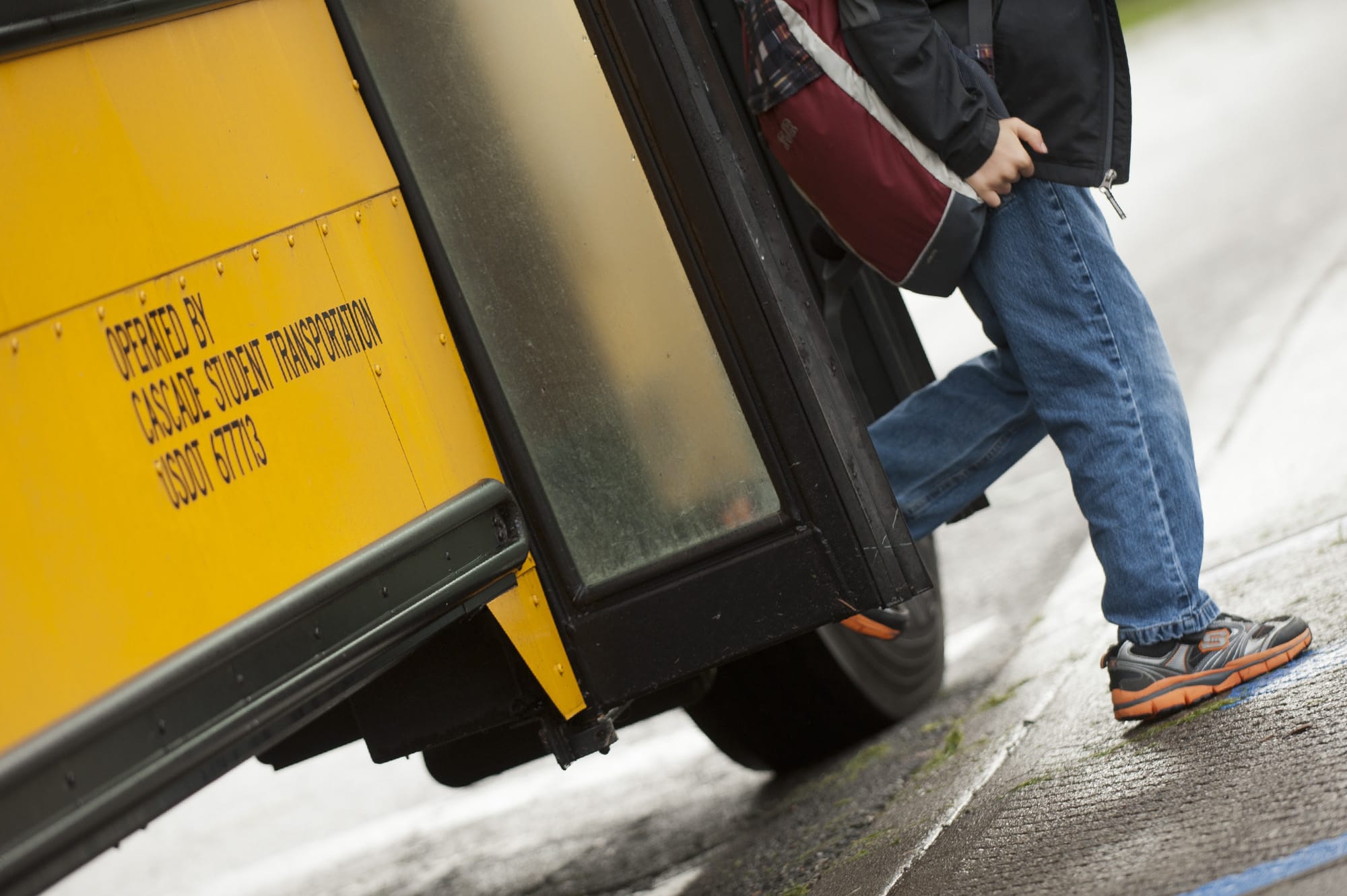AYP: Adequate Yearly Progress is a federal standard for accountability, which measures states, schools and districts by the results of state-level tests in two main content areas: math and reading.
EOC: End-of-Course exams measure high school students’ knowledge in math and biology at the end of the course.
HSPE: High School Proficiency Exams are comprehensive exams that measure the basic proficiency of high school students in reading and writing, and they are the state’s exit exams in those subjects.
MSP: Measurements of Student Progress are taken by students in grades three through eight.
AYP: Adequate Yearly Progress is a federal standard for accountability, which measures states, schools and districts by the results of state-level tests in two main content areas: math and reading.
EOC: End-of-Course exams measure high school students' knowledge in math and biology at the end of the course.
HSPE: High School Proficiency Exams are comprehensive exams that measure the basic proficiency of high school students in reading and writing, and they are the state's exit exams in those subjects.
MSP: Measurements of Student Progress are taken by students in grades three through eight.
NCLB: The No Child Left Behind Act of 2001 authorizes several federal education programs that are administered by the states. The law is a reauthorization of the Elementary and Secondary Education Act. NCLB significantly raises expectations for states, local school districts and schools by requiring that all students meet or exceed state standards in reading and mathematics by 2013-14.
NCLB: The No Child Left Behind Act of 2001 authorizes several federal education programs that are administered by the states. The law is a reauthorization of the Elementary and Secondary Education Act. NCLB significantly raises expectations for states, local school districts and schools by requiring that all students meet or exceed state standards in reading and mathematics by 2013-14.
Scores on standardized tests in public schools didn’t fluctuate much when compared to the previous three years, state Superintendent Randy Dorn said Wednesday as his office released 2014 spring state testing results.
Those trends are reflected in Clark County schools.
The results released Wednesday show scores for the 2014 administration of the Measurements of Student Progress for grades three through eight, and High School Proficiency Exams and End-of-Course exams for students in high-school-level courses.
And for the first time since 2011, the scores revealed that most Washington schools didn’t measure up to standards created by the federal No Child Left Behind Act.
Statewide, the number of eighth-graders who met the state reading standard increased from 66.3 percent to 71.5 percent. But the number of seventh-graders who met the math standard decreased from 63.8 percent to 57.8 percent. Students in sixth and eighth grade improved across the board compared to those grade-level numbers last year, Dorn said.
Vancouver Public Schools saw increases in math, with fifth-grade scores increasing by 2.9 percentage points, sixth-grade scores by 3.5 percentage points and eighth-grade scores by 1.9 percentage points.
“Our scores were up 2 percentage points in fifth-grade reading and up 7 percentage points in eighth-grade reading,” said Mike Stromme, the district’s associate superintendent for teaching and learning.
He noted that transition time to middle and high school “has been an area of focus” for the district.
In Battle Ground Public Schools, more than 95 percent of CAM Academy students in several grade levels continued to meet standard. Meanwhile, the district’s Prairie High School saw a drop of 2.2 percentage points on biology exams when compared to the previous year.
In Evergreen Public Schools, numbers were both up and down. District- wide, high school writing numbers increased 2 percentage points from the previous year, while reading numbers dipped 1.7 percentage points.
Evergreen Superintendent John Deeder said students and parents shouldn’t take the test scores and federal designations as the only measures of student success.
“We don’t judge your child on one test score,” Deeder said. “We judge your child on the body of work they’ve done over the year. One day in April does not define a child’s knowledge.”
Federal standards
Washington had a two-year reprieve from some No Child Left Behind requirements and then in April the federal government took away the waiver and forced Washington to go back to the old system. More than 1,900 schools out of about 2,200 in Washington were labeled as failing in 2014 because of the No Child Left Behind system.
In Clark County, it appears that only one traditional public school, Hockinson Heights Elementary, met Adequate Yearly Progress, or AYP.
AYP measures states, schools and districts by the results of state-level tests in two main content areas: math and reading. AYP uses this assessment data to measure the academic performance of all students, including subgroups such as children whose families qualify as low-income. The goal is that all students reach 100 percent proficiency in math and reading, starting with the 2013-2014 school year.
However, educators say that goal is unrealistic.
“According to the NCLB rules, every student in Washington must be proficient in reading and math as measured by state assessments,” Vancouver Public Schools Superintendent Steve Webb wrote in an Aug. 24 opinion piece in The Columbian. “As a result of this faulty logic, very few school districts in Washington and no state have met the NCLB requirements.”
Letters to parents
This month, most school districts in the state were required to send letters to parents of children attending Title I schools where 100 percent of the students did not meet AYP standards. The letters tell parents that their child is attending a failing school, Dorn said.
“Losing the waiver has been tough,” said Evergreen’s Deeder. “We know our schools aren’t failing. We do have children who it takes longer to learn. We have 12 years to get them to the standard. It’s very frustrating because it upsets families. They aren’t sure what to do.”
Dorn did not hide his disdain for the federal rules that caused Washington to lose its waiver.
“By losing our waiver, we’ve had to do some things I think are ridiculous, stupid, ineffective and a waste of resources,” Dorn said.
Changes ahead
Next spring, many students across the state will take the more challenging Smarter Balanced test. By 2019, all students in the state will take the new exam.
In high school, the Smarter Balanced test will determine whether students are ready for college or a career, while the tests high school students took in the 2013-2014 school year were designed to test proficiency at the 10th-grade level.
Dorn said he expects next year’s test scores to be lower to reflect the more difficult exam.
“It’s looking at different things than we’ve looked at before,” Dorn said. “It’s about problem solving. We’re asking more of students. It will be a transition for the teachers and for the kids to get the skill set.”
In 2014, some schools participated in Smarter Balanced field tests instead of taking the typical exams. The results of those field tests were not released Wednesday.
Starting with the class of 2019, meeting standard on the Smarter Balanced tests will be required for high school graduation.
The Associated Press contributed to this report.




